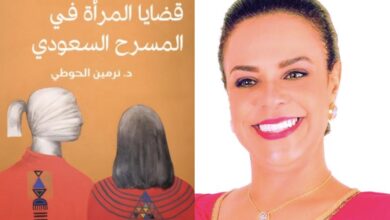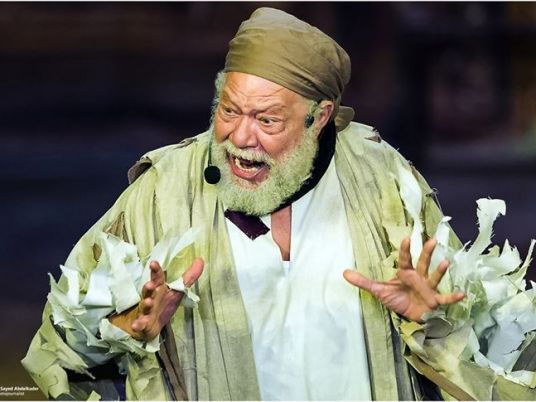Each summer, the women of the Bussy Project convene on stage to put on a performance about women’s issues built around a series of personal stories from everyday life.
This week, Bussy–the feminine form of the Arabic vernacular command to "Look!"–put on a mini-performance for a Women’s Day celebration on 8 March at the Mubarak Public Library in Giza. The performance dealt with the veil, codes of public behavior and other questions affecting women.
Bussy capitalizes on the private space of female sentiments, where self expression and articulation become liberating acts of the self. Those acts use artistic and literary tools to communicate the opaque sides of oneself to the outside world.
This communication process is both informative and engaging. “We started out at the American University in Cairo (AUC) five years ago with a set of other activities,” says Sondos Shabayek, one of the directors of Bussy’s annual performance. "But the performance was the most popular. We realized that people want something truthful."
Samia Mehrez, professor of Arabic literature at AUC, calls the project “a brilliant formula for dissemination.”
Bussy initially went through the motions of organizing lectures, conducting research and screening films on women’s issues. “But those remained traditional ways of tackling women’s issues,” says Menan Omar, another co-director of Bussy’s annual performances. “We found that the performances are a more innovative way." This gray space between the private and the public is Bussy’s platform, in which performers–along with regular women–present scenes portraying their own personal experiences as well as real-life testimonies of the women they represent.
“I heard things that I never heard women talking about, like harassment, the experience of childbirth and experiences of abortion,” says Shabayek, who is also chief editor of ihna, an Arabic-language youth magazine. “They are truthful, personal stories.”
“Besides being personalized stories, they are also liberating on the social level and on the language register,” Mehrez says.
Bussy performs in classical Arabic, colloquial Arabic and a mixture of the two, as well as in English. “There is a fantastic language register whereby they try to say whatever they want to say in whichever language, as opposed to resorting to formal speech and doing it comme il faut,” Mehrez notes.
The development of the Bussy performances came as an Egyptian answer to the Vagina Monologues, which were first presented in Egypt in 2004 at AUC. A local version of Eve Ensler’s off-Broadway play, the Egyptian Vagina Monologues shocked its audience with its bare narratives on sexuality.
“The Vagina Monologues were considered too graphic, obscene and culturally irrelevant,” says Omar. But while the content of the Vagina Monologues was met with criticism, the format–public performances based on life stories–served as an inspiration for Bussy.
Nevertheless, Bussy does not fall into the trap of self-censorship. We find performances that feature issues and terms not deemed fit for public discussion. From halawa-making (a local hair removal mechanism using a sweet paste) to sexual molestation by a teacher or a preacher, Bussy re-situates the original monologues in a more localized context.
“The idea is to challenge culturally-sensitive boundaries,” says Mehrez. "These boundaries are not cut in stone. They need to be unsettled and questioned all the time. Part of getting to the issues is the ability to talk about them out loud and to articulate them."
Bussy’s stage-production cycle starts with a call for entries selected according to their relevance. “They have to be women and it has to be real,” says Shabayek. Under the rubric of "real," Shabayek searches the entries for true stories or expressions of sentiment.
Shabayek has written and performed several of her own stories. In her performances, she expresses herself on a range of topics, from arranged marriage to the stereotypes associated with veiled women. “I wrote about gender identity and how it constantly changes," she says. "This shift that happens–when in the street you walk like a soldier, and when you get home you put on makeup.”
For Omar, the women’s issues to which she relates fall under one umbrella. “I don’t like when you don’t have a say,” she says.
Through the years, the entries submitted to Bussy have teemed with narratives of harassment in its various forms.
Bussy has faced criticism because the stories performed invariably reflect the consciousness of a particular socio-economic class. The criticism is not unfounded, particularly given that Bussy is the offspring of AUC, widely perceived as an elitist institution. Nevertheless, the act of disclosure can be a liberating one–one that strives to cut across class lines.
Today, Bussy is performing outside the confines of a western educational institution by staging performances in public spaces in downtown Cairo and at Women’s Day functions like the one this week. The exercise has proven mutually influential, on both the Bussy family as well as the audiences.
The production itself is quite minimalistic, with little interest theatrical technicalities. This strategy tends to direct viewers’ attention towards performers’ narratives and away from the aesthetics of stage production.
Omar reveals a certain maturity to Bussy’s gender-based approach to the entries it receives. “The idea isn’t to exaggerate the representation of women’s malaise, but to expose both sides," she says. "I would like to see men writing their own stories.”




